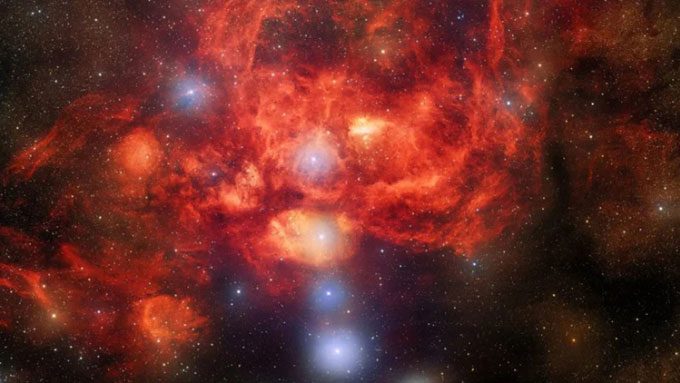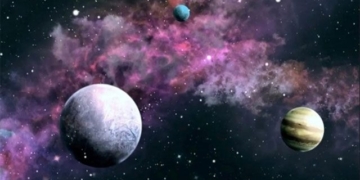The Dark Energy Camera (DECam) captures a stunning image of a star-forming region located 8,000 light-years from Earth.
Mounted on the Víctor M. Blanco Telescope, a 4-meter telescope at the Cerro Tololo Inter-American Observatory in Chile, DECam is part of a sky survey project aimed at searching for evidence of dark energy—a form of invisible energy that astronomers believe is accelerating the expansion of the universe.

Lobster Nebula captured by DECam. (Image: CTIO/NOIRLab/DOE/NSF/AURA)
While scanning the sky, the telescope’s camera has captured some breathtaking views of the universe. In a newly released image on September 12, the Lobster Nebula, or NGC 6357, appears like a blazing flame in the constellation Scorpius, approximately 8,000 light-years away from Earth.
The image reveals a star-forming region that spans 400 light-years, with young stars scattered across clouds of gas and dust. At the center is a distinct structure that astronomers refer to as an open star cluster, consisting of very young, massive stars.
Some bright spots surrounding the star cluster are known as pre-stellar objects—newly formed stars still enveloped in thick layers of gas and dust, gradually revealing their stunning beauty. Stellar winds, galactic radiation, and strong magnetic fields impact the nebula, compressing the gas and dust within into streams and spirals.
DECam is one of the highest-performing wide-field CCD cameras in the world, a type of digital imaging technology capable of capturing extremely faint light sources. The device can provide 400 to 500 images each night and has recently reached the milestone of one million individual exposures.
To photograph NGC 6357, astronomers used multiple special filters to isolate specific wavelengths of light. The final image is a composite of numerous exposures taken with different filters and layered together.
By observing distant star clusters at these wavelengths, astronomers can gain a better understanding not only of the motion but also of the temperature and chemical composition of the nebula.




















































